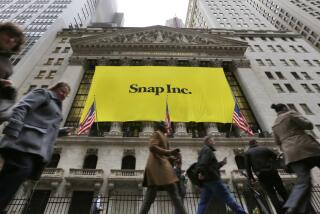For Uninitiated, Even Pronouncing Terms Is Hard
- Share via
“We’re not gene splicers. We’re cell fusers,” a woman from Hybritech explained, patiently.
“We’re an idea factory,” said the man at Nissan Design. “ . . . It’s like an orchestra.”
“We’ve been developing electron beam lithography equipment,” said the president of Electron Vision Corp.
The president of IRT paused. “It’s rather arcane, I must admit.”
Some make biomagnetic instrumentation and superconducting magnetometers. Others make life-aging and burn-in chambers and systems. One makes high-density cartridge magnetic tape drives and formatter controllers for hostile environments.
Farther north, they are curing cat leukemia.
They are the spinoffs and new ventures that populate San Diego’s Golden Triangle and adjacent areas. Just over the shoulders of Interstates 5 and 805, they map the frontiers of biotechnology, electronics and genetic research.
Many trace their roots to UC San Diego, setting the tone from its nearby perch on Torrey Pines Mesa. There, the university is erecting a structure to house buildings for testing in simulated earthquakes. Biochemists are making bacteria glow like fireflies.
Nearby, one of IRT’s specialties is “survivability”--that is, making sure electronic systems will survive what lesser entities may not. So the Callan Road company designs electronic systems to outlast the results of a nuclear explosion.
Electron Vision Corp. has just delivered its first prototype system--an electron beam for use in patterning integrated circuits. The E-beam offers higher resolution than traditional methods, President Bill Livesay said. Systems sell for up to $3 million a pop.
Synthetic Genetics on Roselle Street synthesizes DNA to be used for diagnostic testing for infectious diseases. It hopes eventually to sell its product as an antibiotic or antiviral agent--a goal that its president, Rick Tullis, says may be 15 years away.
Then there’s Laser Power Optics Corp., making components for lasers used in repairing detached retinas and in the Strategic Defense Initiative, better known as Star Wars. Other lasers made by the firm go into range-finding and target-designation systems in tanks and aircraft, and into robotic welding systems for automobile bodies.
Finally, GA Technologies is exploring nuclear-powered satellites and an electromagnetic launcher for shooting weapons at unprecedented speeds. Its upcoming nuclear fusion experiments aim to reach “break-even”--that magic moment when as much power is produced by the fusion of molecules as is used to make them fuse.
“We will get there,” said Nicki Hobson, a spokeswoman for GA, echoing a common refrain in the Golden Triangle and beyond. “It’s just a function of time and money.”
More to Read
Inside the business of entertainment
The Wide Shot brings you news, analysis and insights on everything from streaming wars to production — and what it all means for the future.
You may occasionally receive promotional content from the Los Angeles Times.










